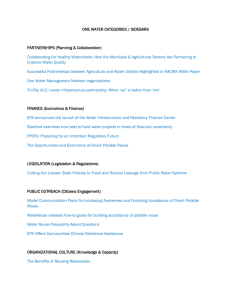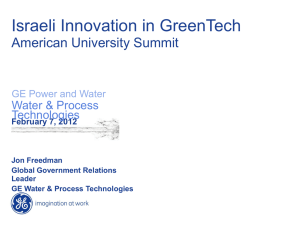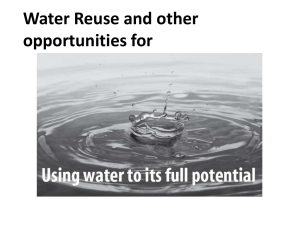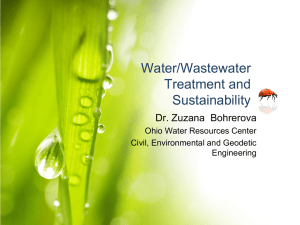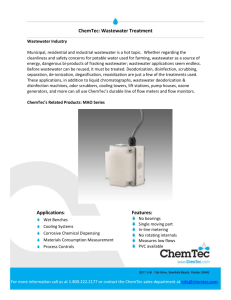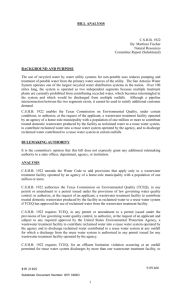Water re-use system in Tenerife
advertisement
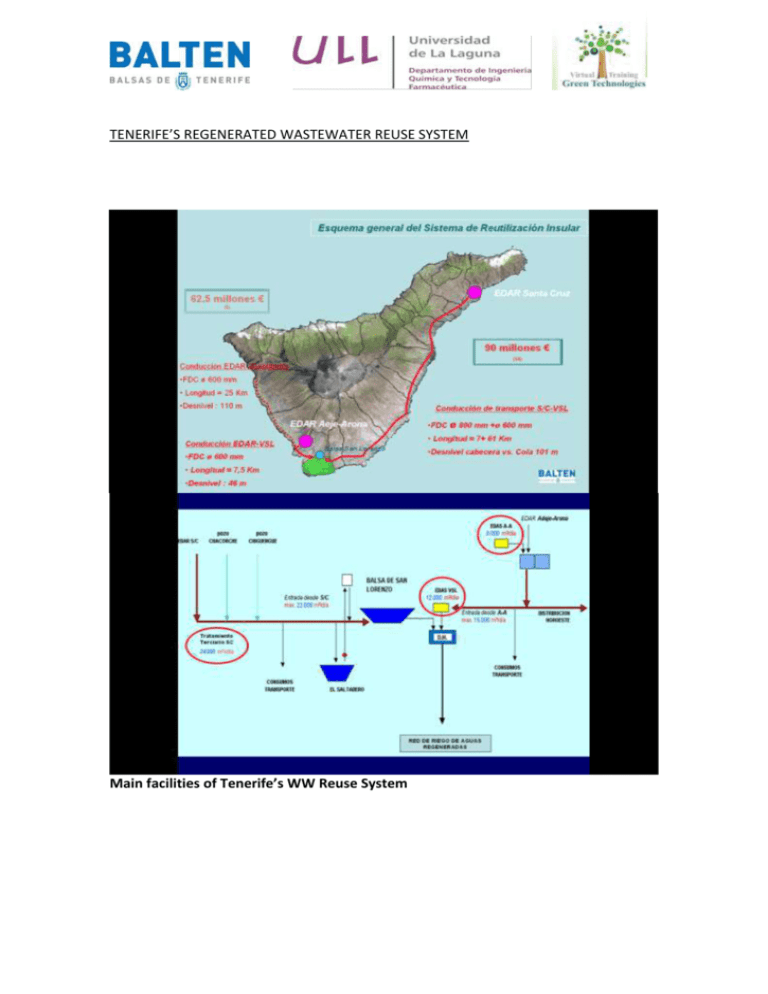
TENERIFE’S REGENERATED WASTEWATER REUSE SYSTEM Main facilities of Tenerife’s WW Reuse System Costs distribution of Tenerife’s Wastewater Reuse System (by BALTEN) Tertiary Treatment for wastewater regeneration implemented by BALTEN at Pumping Station of Santa Cruz. System description: The Reclaimed Wastewater Reuse System of South Tenerife, operated since 1993, enables to reuse reclaimed wastewater from the metropolitan area of the city of Santa Cruz for crop irrigation in the South of the island. The Wastewater Treatment Plant of Santa Cruz receives an average flow of 20,000 m3/day. The plant consists of a pretreatment, a primary treatment, and a conventional activated sludge system. The pretreatment includes the removal of gross solids, sand, and fat, oil and grease. The primary sedimentation is carried out in two circular settlers, where approximately 40% of the organic matter is removed. The secondary treatment consists of a conventional activated sludge system, carried out in two aeration tanks. The average solids retention time is 6 days, which justifies the non existence of nitrification during the secondary treatment. After the secondary settlers (two units) a whole organic matter removal of 90% is normally achieved. The effluent from the plant is transported to a pumping station situated next to the treatment plant that enables to control the flow-rate from the plant to the zone of reuse. Water is then pumped to El Tablero Gravity Transportation Reservoir, whose capacity is 15,000 m3. A gravity pipeline, starting at El Tablero Reservoir, transports water to the South of the island. The connection system between the reservoir and the pipe induces water aeration, so that the dissolved oxygen (DO) concentration is of about 3 to 4 mg/l at the pipe inlet. The gravity pipe, 0.6 m in diameter and 61 km long, in cast iron with concrete inside coating, has been permanently operated during the period of study with an average flow-rate of 525 m3/h, corresponding to a water velocity of 0.5 m/s and 33 hour mean residence time. The pipe is completely filled, with no possibility of reoxygenation after DO consumption. The pipe ends at Valle de San Lorenzo Reservoir (250,000 m3), adjacent to which there is a complex of tertiary treatment facilities where water is treated by sand filtration, desalination (reverse electrodialysis) and final chlorination. As a whole, eighty-five percent of the reclaimed water from treatment plants of the metropolitan capital area (Santa Cruz-La Laguna) and the main tourist resort area (Adeje-Arona) is reused in the South of the island, in crop and golf-course irrigation.

